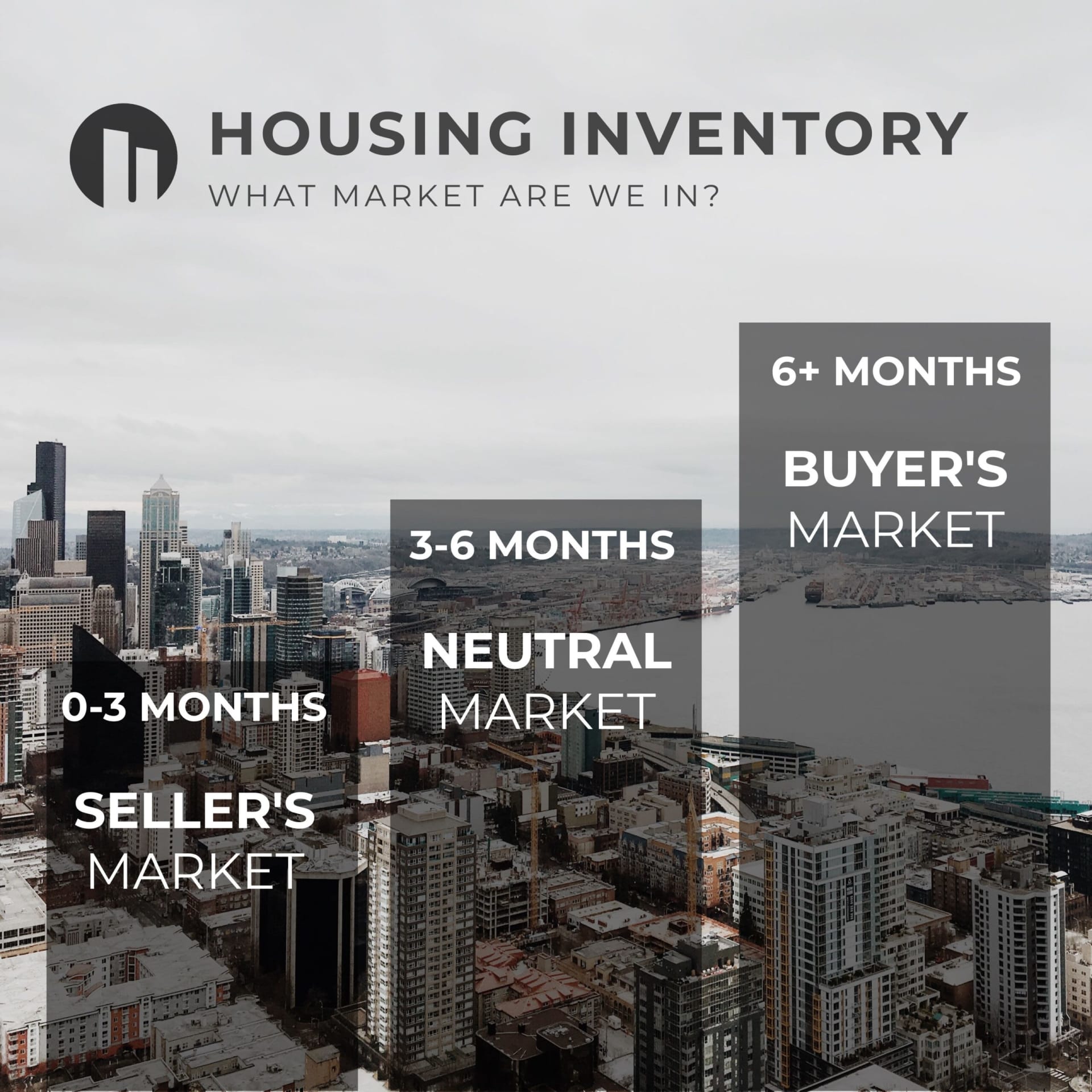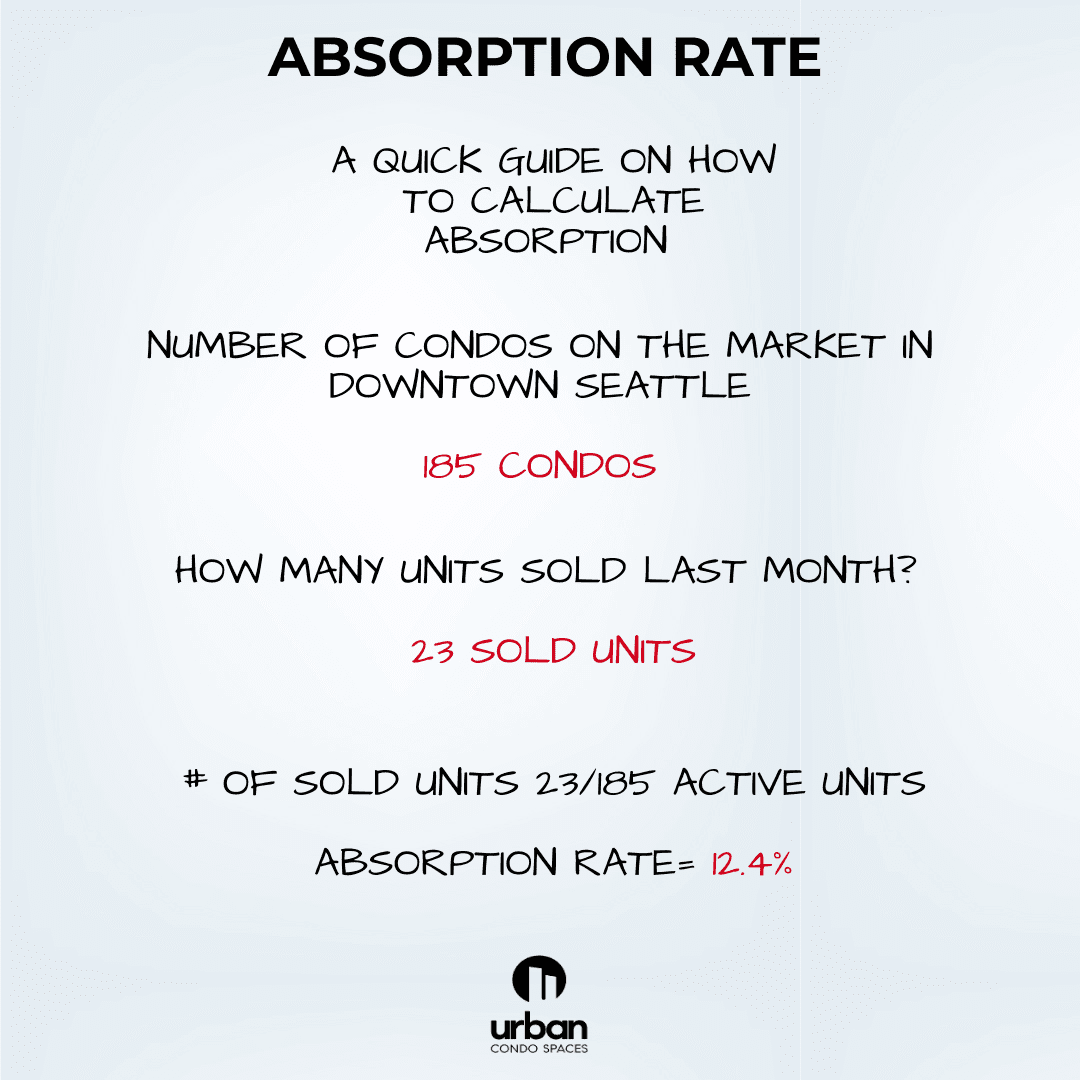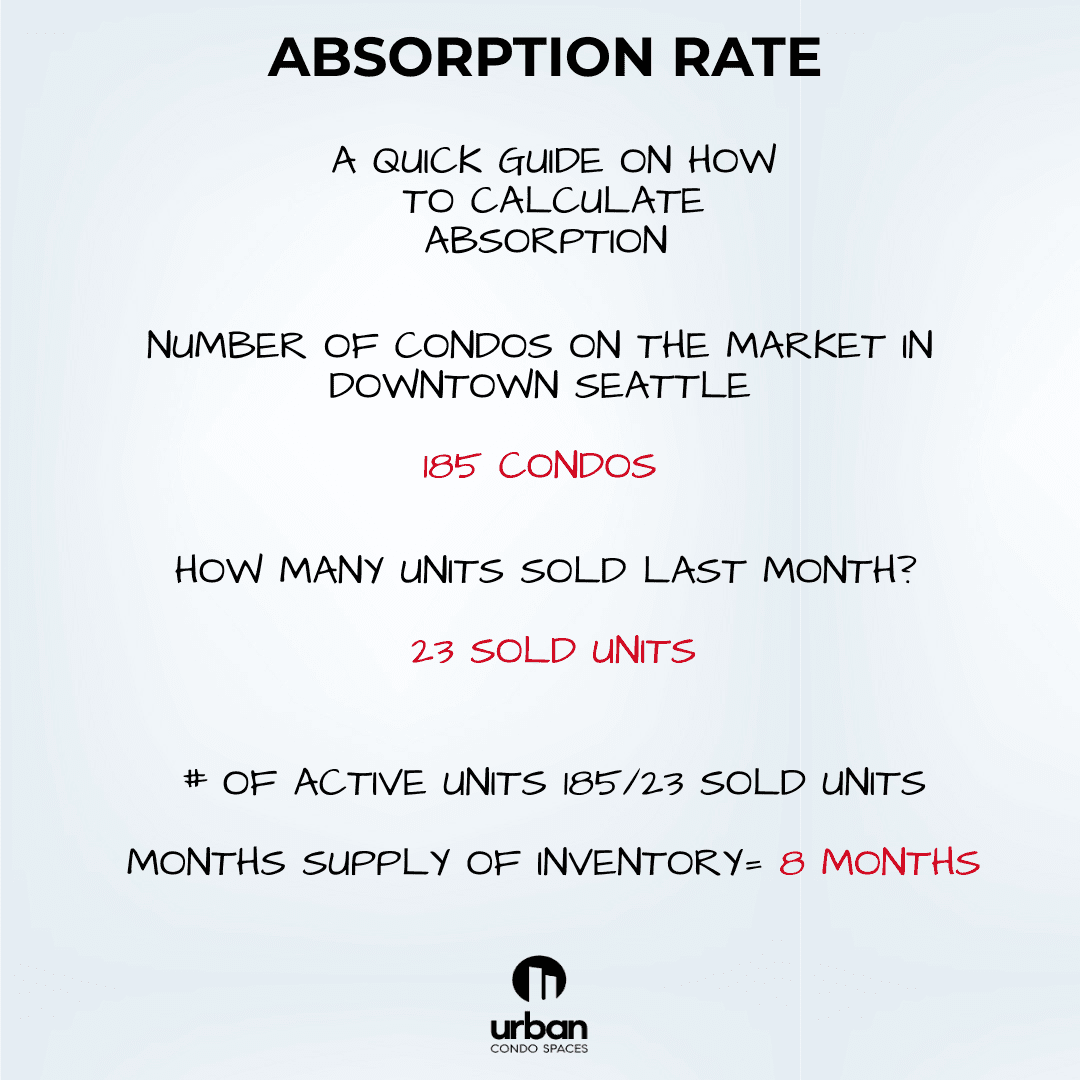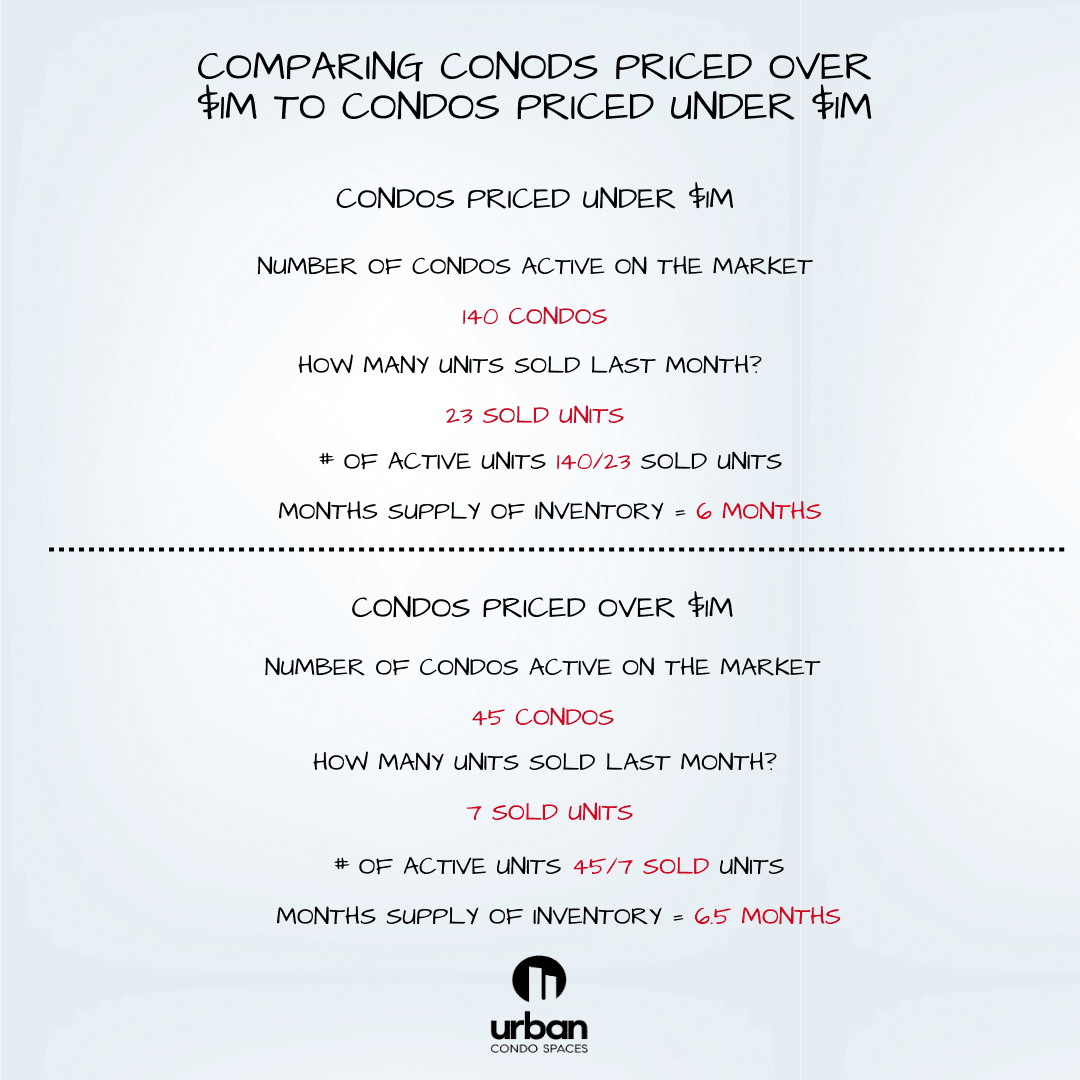How To Calculate Absorption Rate, Housing Inventory
One of the most important numbers to follow in residential real estate is Absorption rate and months supply of inventory. If you closely track the absorption rate, you can quickly become an expert in your local housing market.
Definition:
Absorption rate is the rate at which homes sell in a specific market or area over a given period of time.
The most effective way in my opinion to calculate absorption is on a monthly basis. The absorption rate is calculated by dividing the number of homes that sold over the given period of time by the total number of homes still for sale.
The higher the rate of absorption, the faster homes are selling. So using my example above, the percentage of absorption is 12.4%. In this case it would indicate slower absorption and therefore a buyer’s market.
You can also look at the months supply of inventory to calculate how many months of supply the market has before it runs out. In today’s market, we have inventory, that shows you that we are in a Buyers market (8 months supply). If the months supply of inventory drops to 3 months or less, then we are in a seller’s market. Make sense?
Another useful way to track absorption rate is the by looking at condos priced above $1M and condos priced under $1M. Let’s explore an example I’ve used below for the Downtown Seattle condo market.
As you can see in the graphic, the number of active Seattle condos priced over $1M are taking longer to sell than condos for sale under $1M. This makes sense right?
Let’s evaluate why this is important. When I’m assisting one of my clients in selling their home, I have to be acutely aware of how brisk the market is. This helps me evaluate the market and allows me to set proper expectations with my sellers. I’ll ask myself the following questions:
- How many condos are selling each week?
- What is the number of condos selling each month?
- How long will it take this unit to sell?
As you can see, absorption rate is a powerful tool in getting to know the rhythm of the market. It allows us to set expectations and realistic goals for the sale of the home/condo we are selling.





